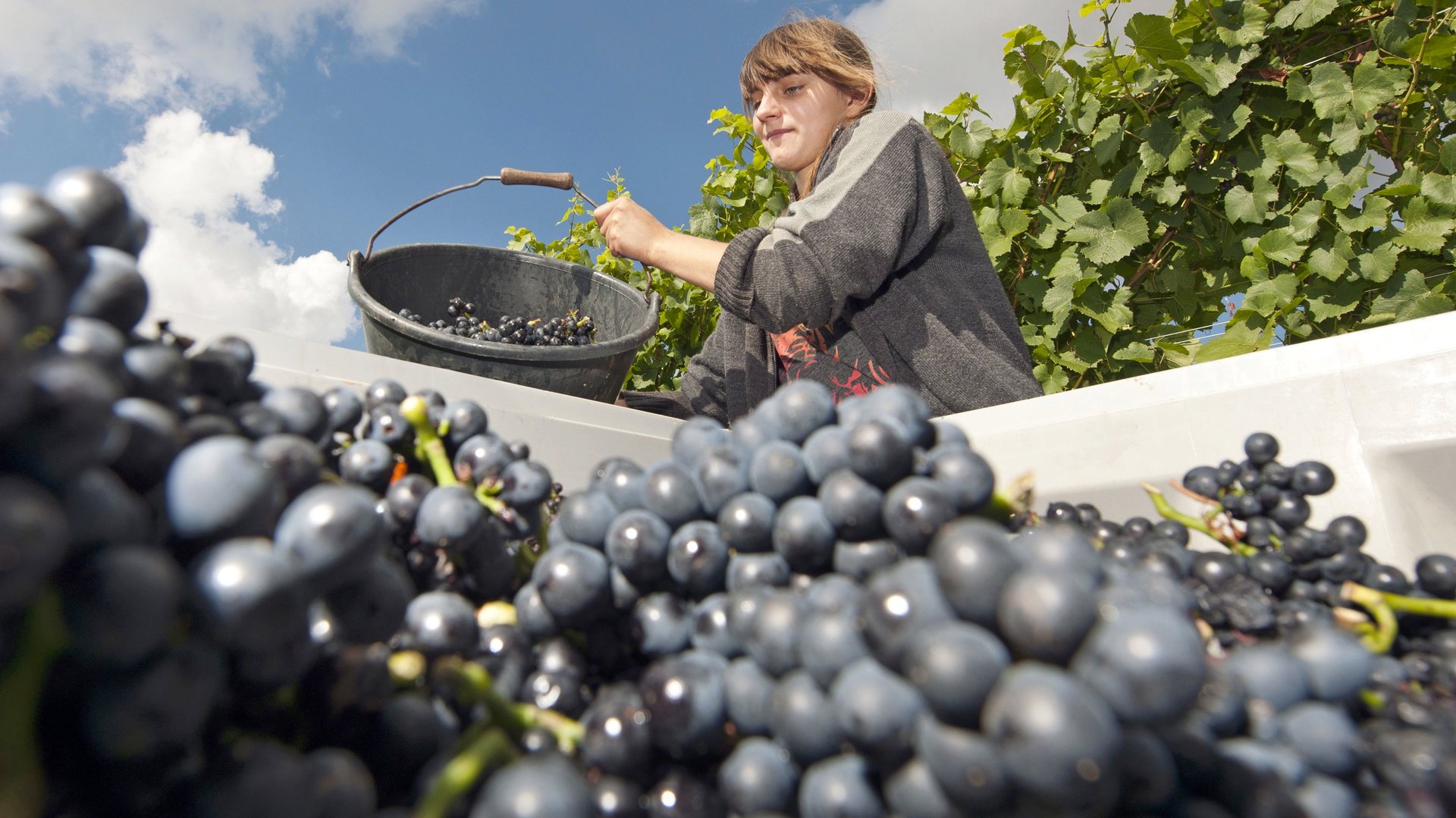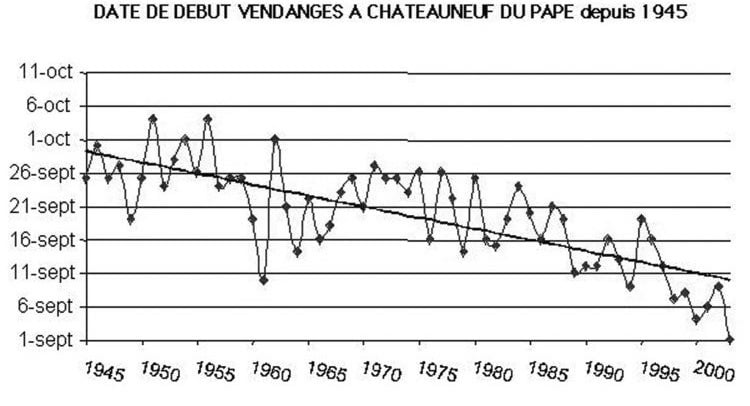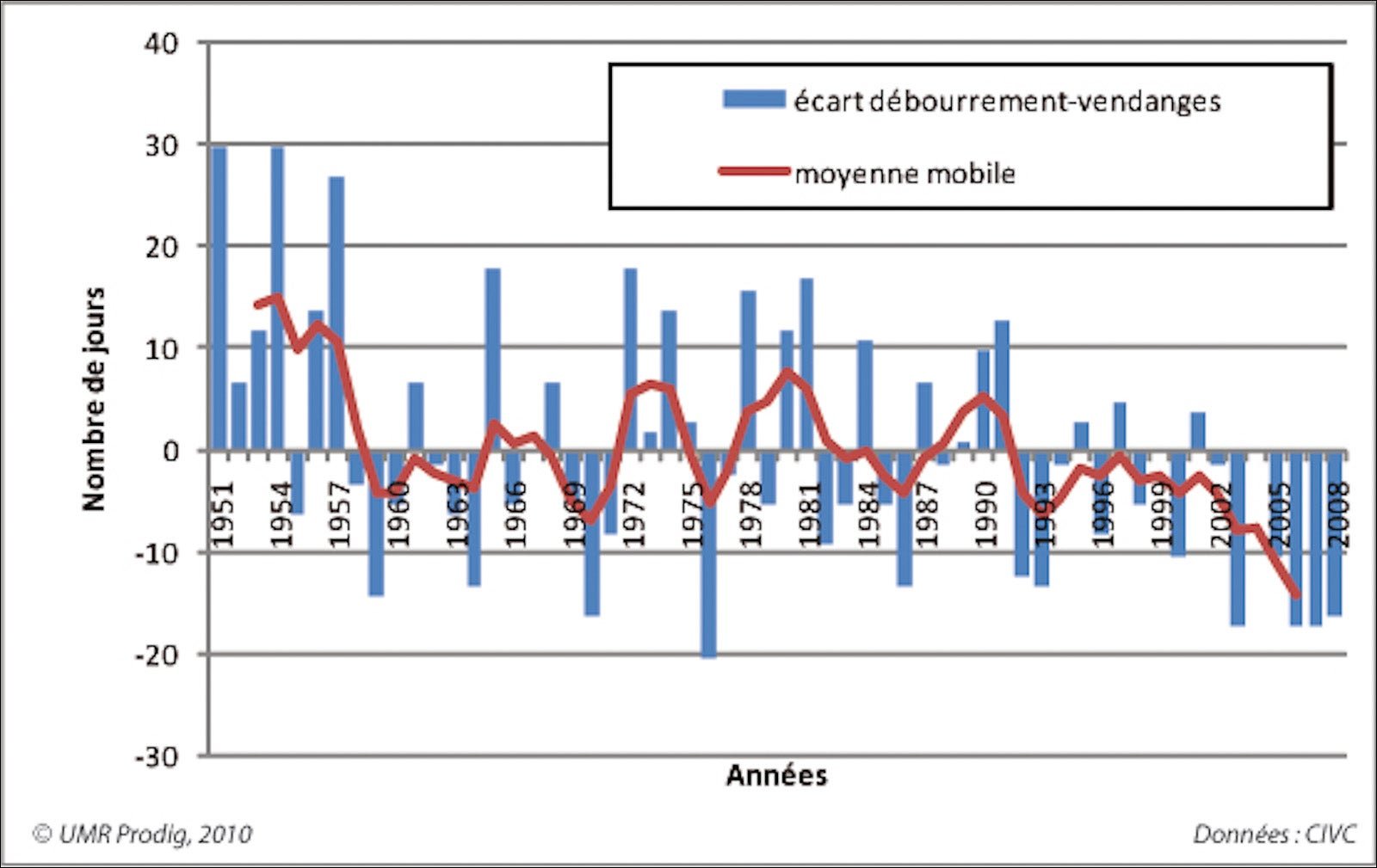What is global climate change doing to our favorite wines?
This article is part of a series on the 2012 wine harvest and how certain vineyards have been coping with the effects of global climate change on the notoriously temperamental wine grape.


This article is part of a series on the 2012 wine harvest and how certain vineyards have been coping with the effects of global climate change on the notoriously temperamental wine grape.
Wine is so intimately linked with climate that an oft-cited 2004 study (paywall) in the venerated scientific journal Nature was able to reconstruct worldwide annual spring-summer temperatures from 1370 to the present by examining the Pinot Noir harvest dates in Burgundy over the centuries.
It is hardly surprising, then, that wine growers were among the first members of the agricultural industry to notice that global climate change was progressively altering their product. Some scientists and wine growers have blamed climate change for disasters as diverse as increased vine disease and the increasing occurrences of hail (the likes of which which destroyed wine crops in large parts of Europe this summer.) The most striking phenomenon has been the acceleration of the wine harvest, because higher temperatures have led to higher photosynthetic activity, and thus a faster ripening of grapes.
The degree of joy with which winegrowers greeted this phenomenon has been directly proportional to their distance from the equator. Wine growers at the northern end of the wine-growing perimeter (such as England, northern Germany, and Switzerland) are enjoying riper wine grapes with less wasted to frost. In warmer climates, however, early ripening is cause for worry. Scientific studies show that in regions like Champagne (artice in French), Bordeaux, Burgundy (in French), and Châteauneuf-du-pape (in French) all have experienced alarming accelerations of ripening.
In the case of Châteauneuf du-pape, the acceleration was by as much as a month. This is evident in the chart below, taken from a 2004 article on the effect of climate change on the acceleration of harvests. The y-axis shows a span of harvest start dates ranging from Sept. 1 to Oct. 11 of any given year; the x-axis shows years from 1945 to 2003.

The following chart, which appeared in the French scientific publication EchoGéo, shows that in the Champagne region of France, the number of days between bloom and harvest has decreased since 1951. The blue line represents the number of days in the gap, while the red line is the moving average. The zero mark represents the overall average gap of 162 days. Y-axis is the number of days, X-axis represents the years commencing 1951.

But one might well ask: So what if the harvests are earlier? If this means that some day we get Beaujolais Nouveau in October instead of November, is that so terrible?
In the long run, it’s not wonderful. Wine producers have traditionally valued concentration of flavor over yield; the balance of flavors over accelerated speed. A grape overexposed to heat develops too much sugar, which is the ingredient that turns to alcohol. Thus an overly hot year makes the wine too alcoholic. Which is fine if one just wants to get tipsy faster, but excessive alcohol also creates that hot feeling on the tongue, which masks the flavor of the wine.
Furthermore, global climate change doesn’t just mean rising temperatures: it also can mean droughts. Without water, such niceties as whether a grape is sugar-balanced become moot.
Quartz talked to wine growers of various sizes and regions about this year’s weather in their region, their outlook for this year’s harvest, and the effects they’ve observed of climate change on their wines over the years.
Please also read our regional installments: